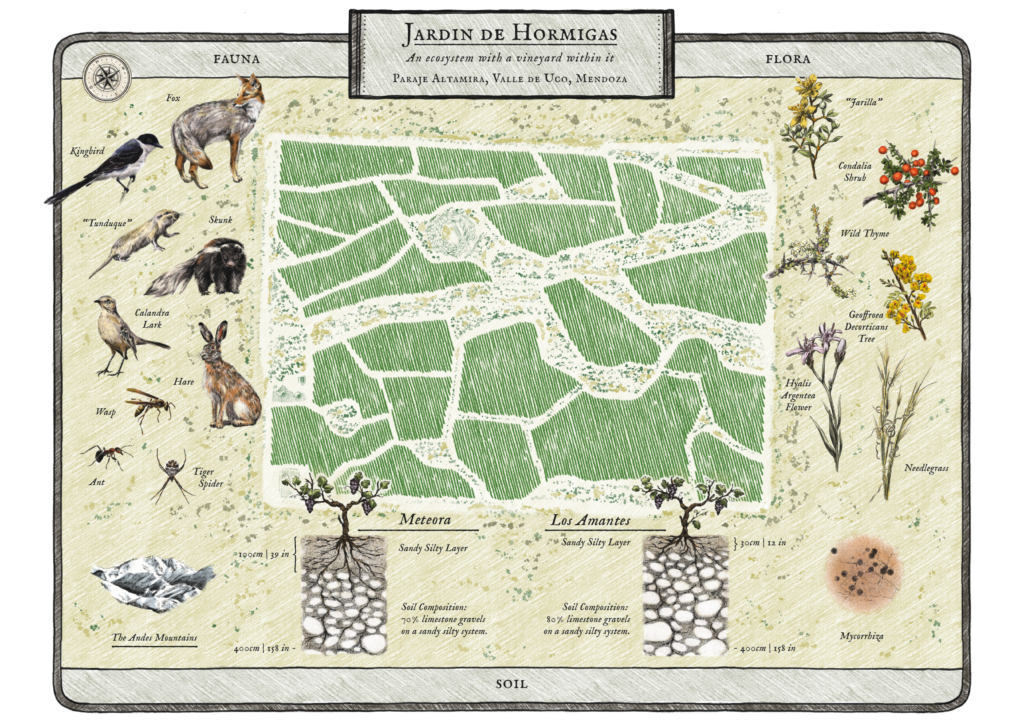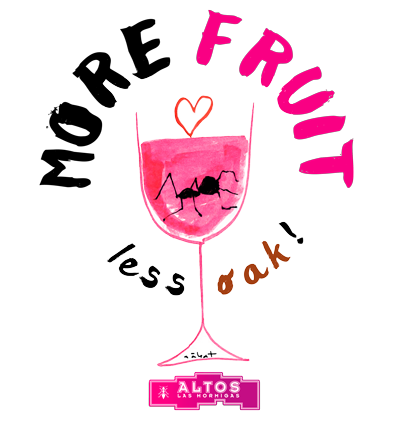JARDIN DE HORMIGAS
Alan York used to say that each piece of land is unique, because of its location, because of its soils, and consequently how winds blow over it, how rain pours over it, and how life balances within the piece of land. The task of the farmer is to acknowledge and nurture its uniqueness.
A garden is a place where we can meet nature and learn to care for it, as it rewards us with its fruits. We planted this vineyard in 2017, after so many years of research in the Uco Valley, looking for a site suited for our purpose. The studies of Pedro Parra Ph.D. brought us to work with calcareous soils in the Uco Valley since 2008, and develop a winemaking strategy to maximize the character of these soils within the climate of the region.
We arrived at the site of Jardin de Hormigas, where a water stream of extraordinary power and size led the formation of the soil 11.500 years ago, bringing rocks of several tonnes down from the Andes. Having chosen the site, we started planning the vineyard with a clear principle: maintaining the balance of the species: plants, animals, and fungi.
While vineyards in Mendoza have a square shape, all parcels in Jardin de Hormigas have an organic form that reflects soil units, each parcel follows natural hidden underground lines. Pedro Parra studied these soils by making 50 pits and designed the parcels so that each one of them gives us a wine with a personality: the personality of its origin.
A balanced vineyard needs a balanced ecosystem where many species can live together. This is why we farm organically since day zero and we use compost made of the same materials that we pull from here when we harvest and prune, to enhance the soil structure. We thank our founder Alberto Antonini for this clear vision: an Ecosystem with a vineyard in it.
This combination of a great Terroir and biodiversity farming since inception makes this place unique and authentic. The wines coming from this vineyard show the power of nature here.



